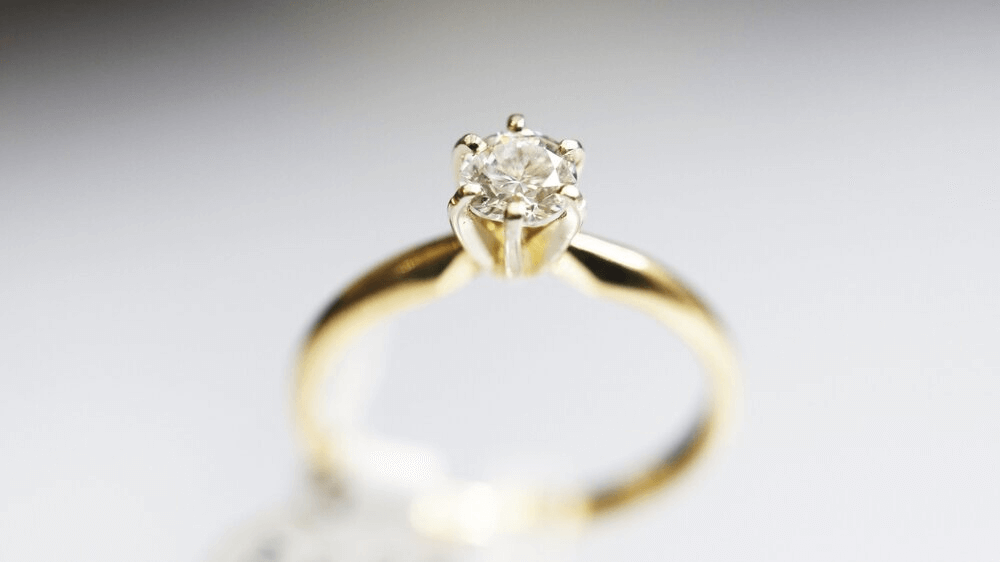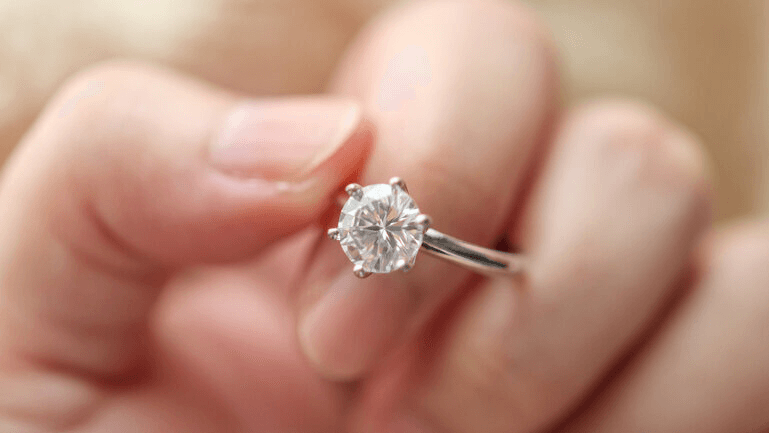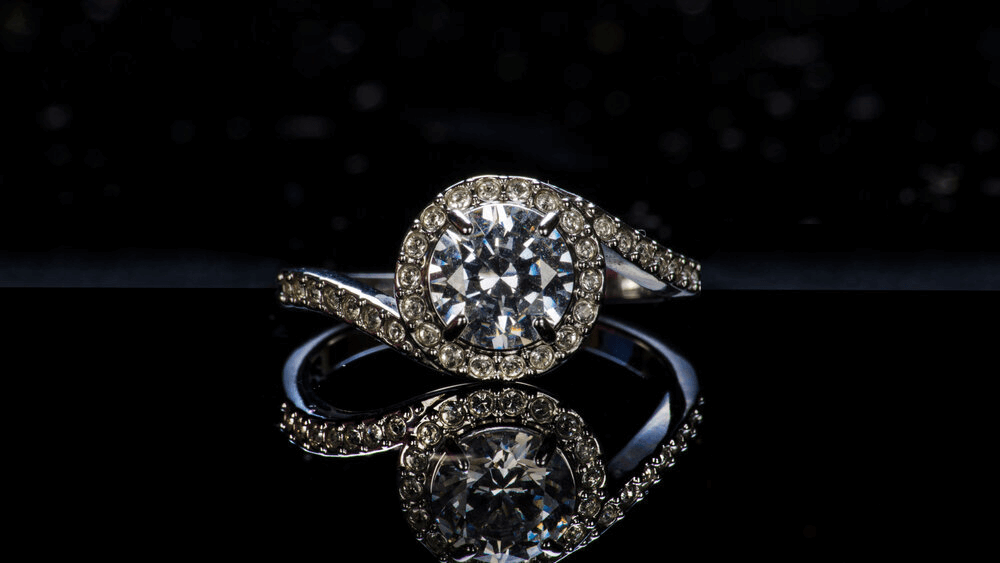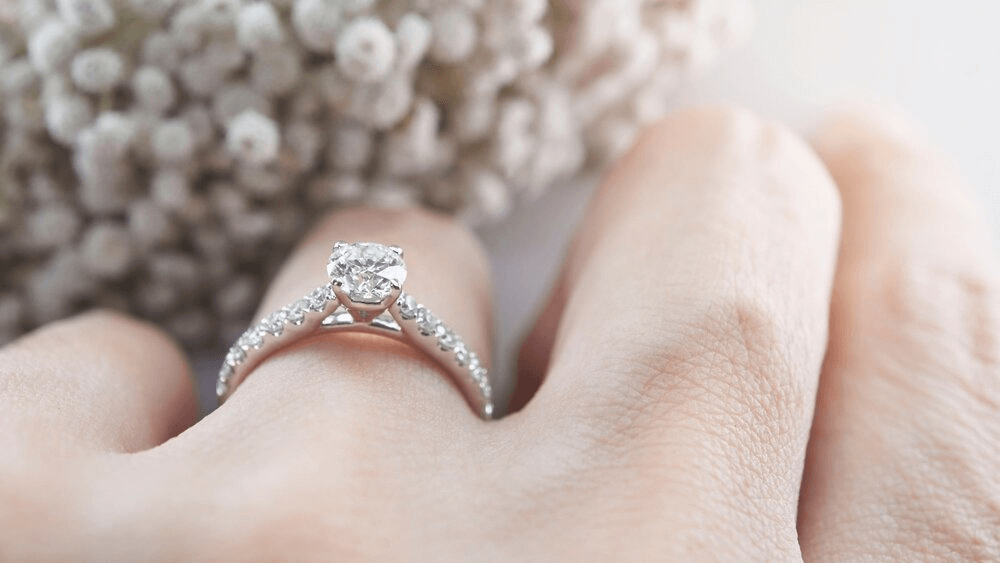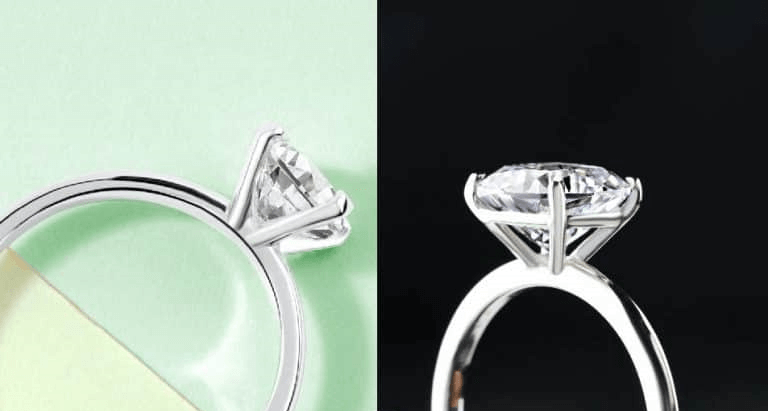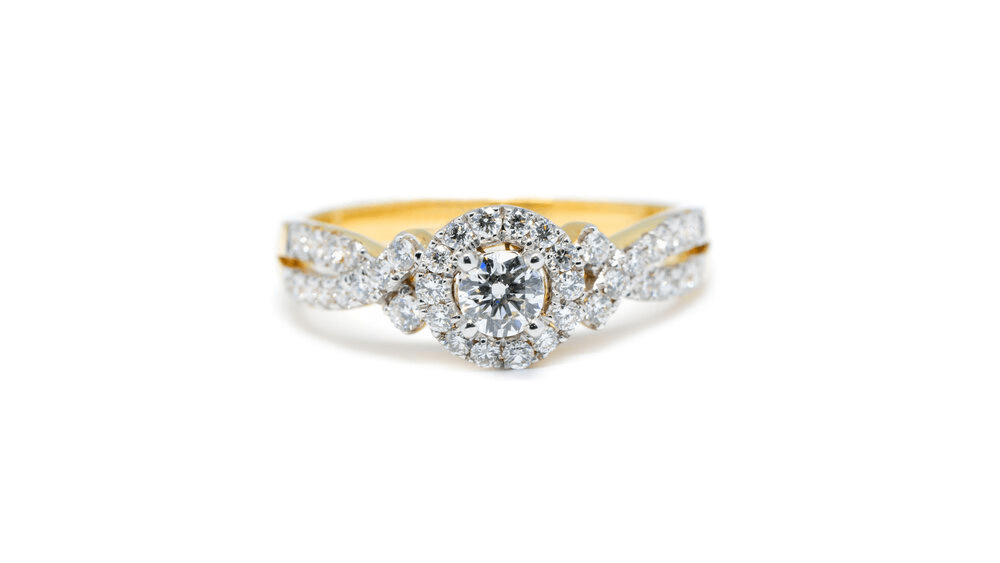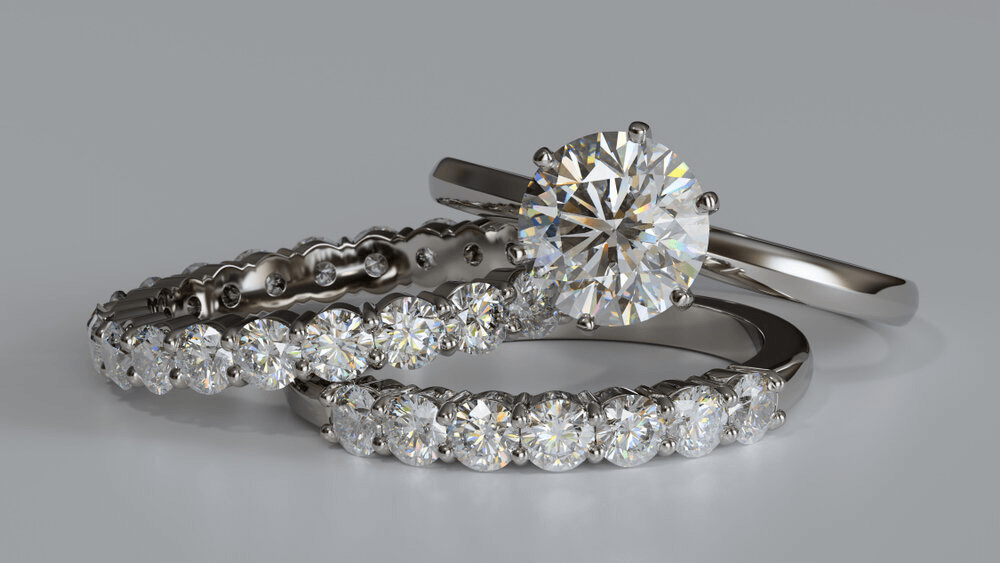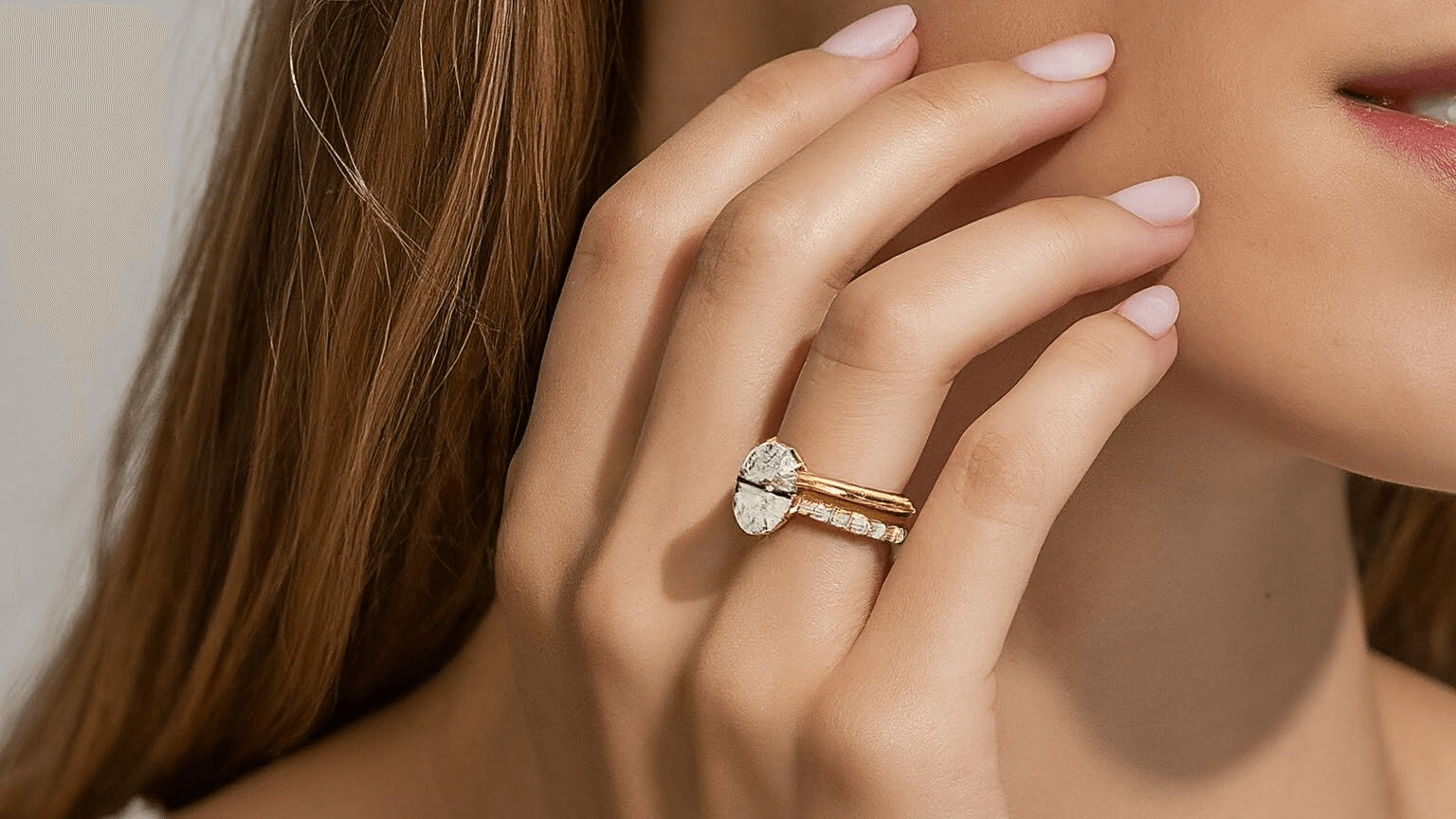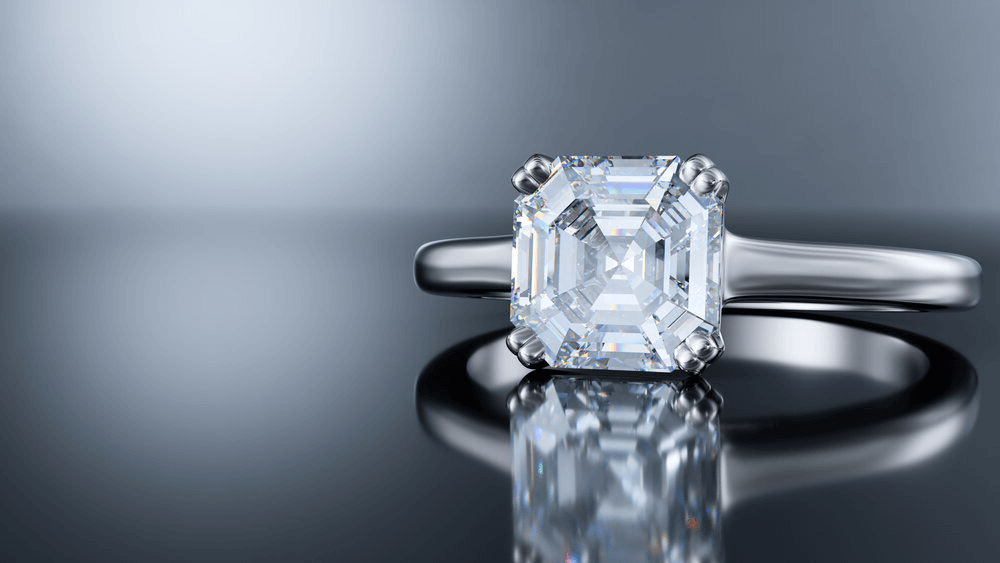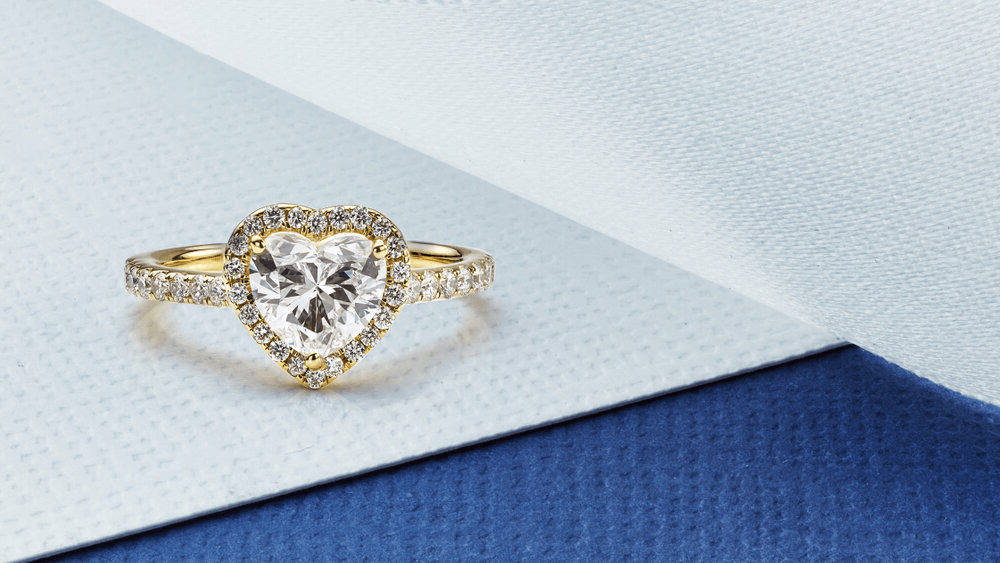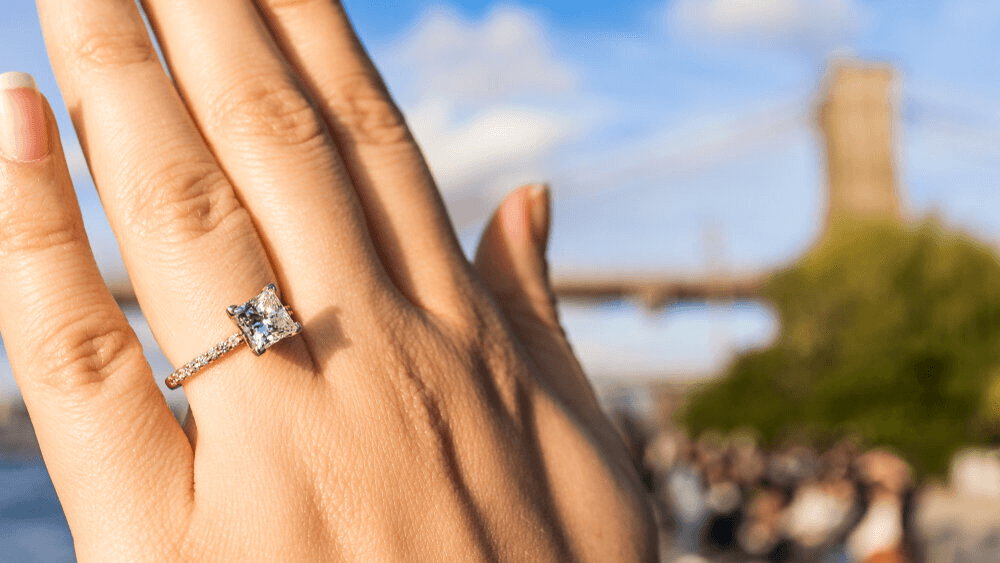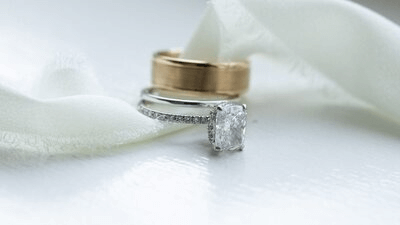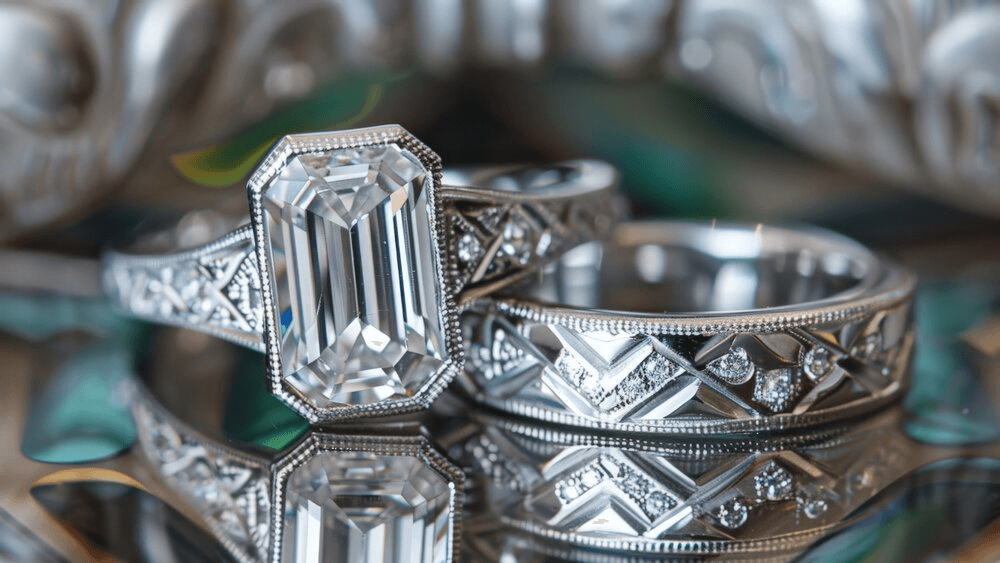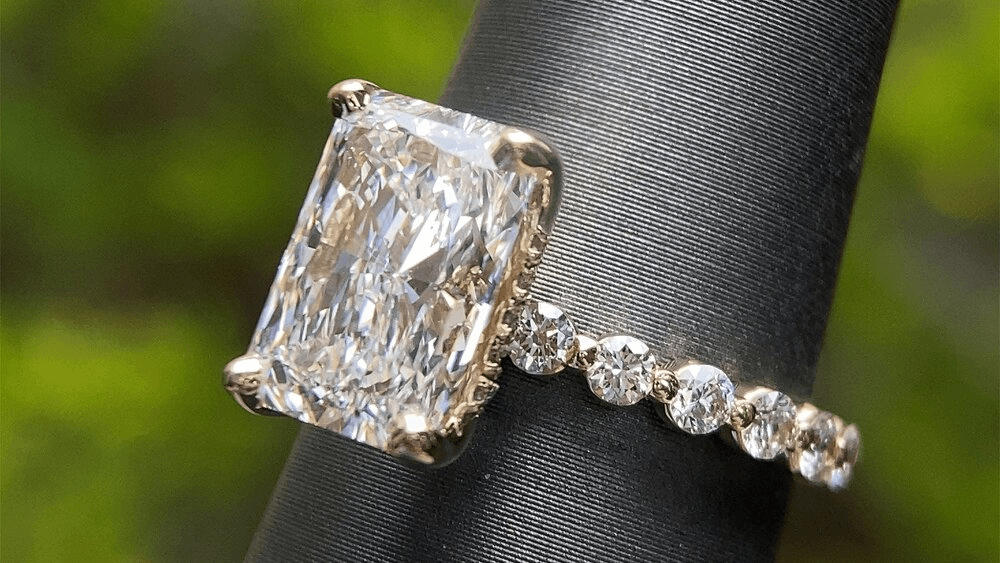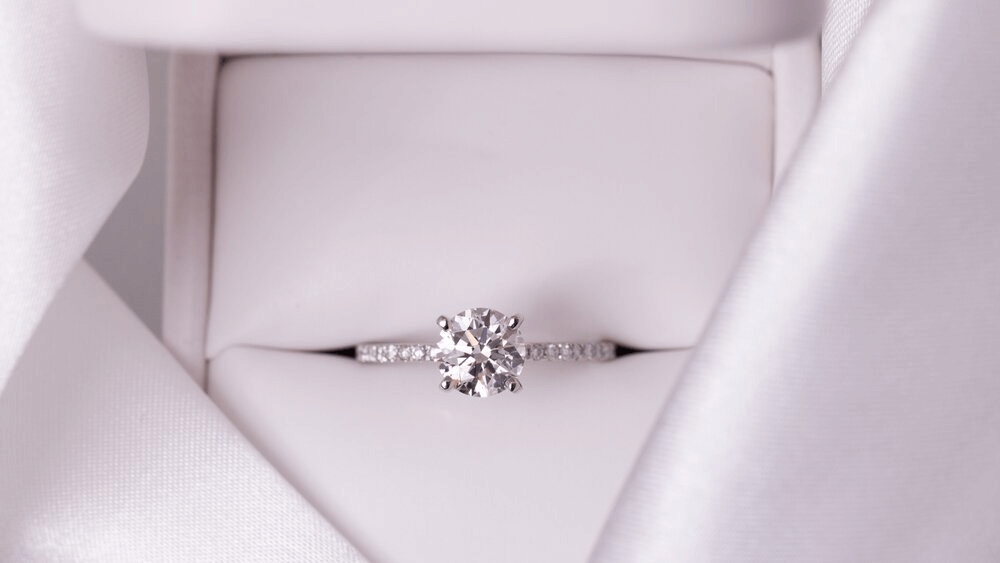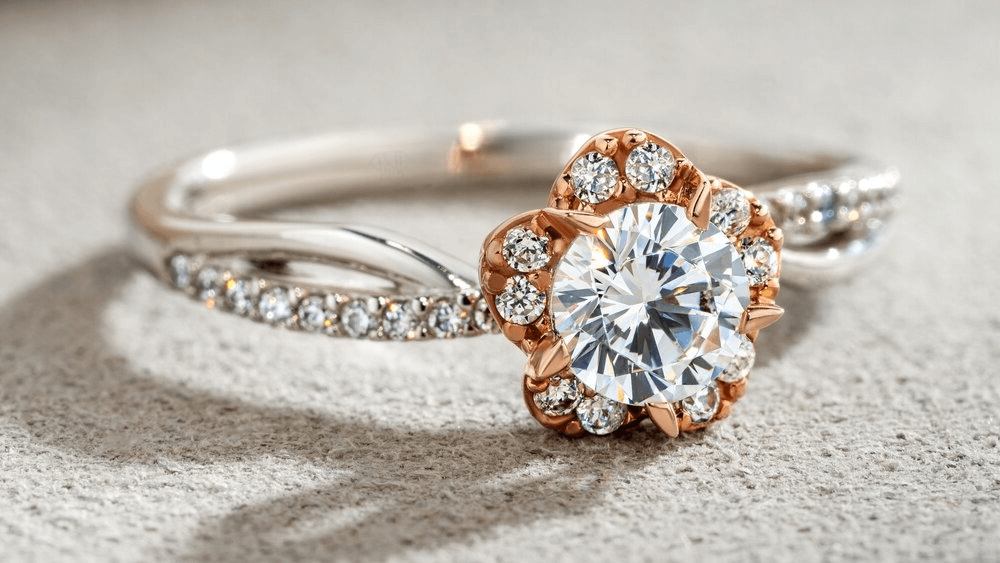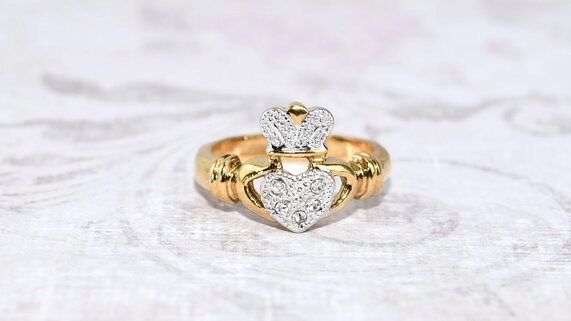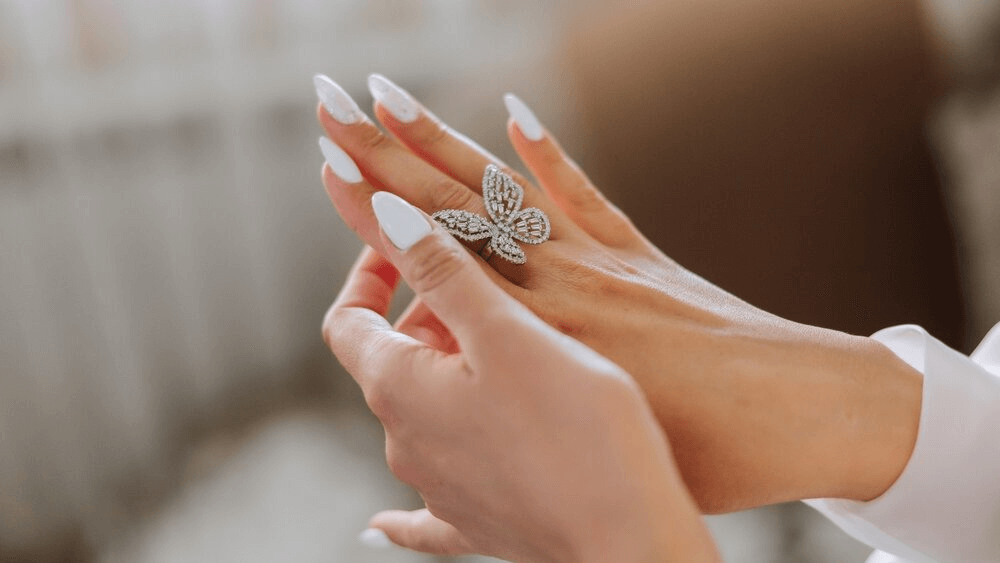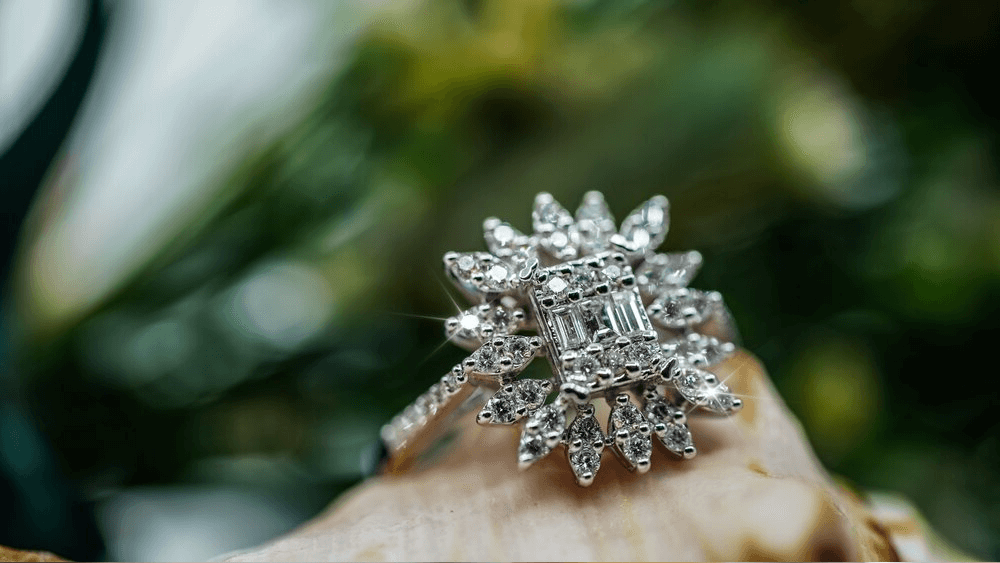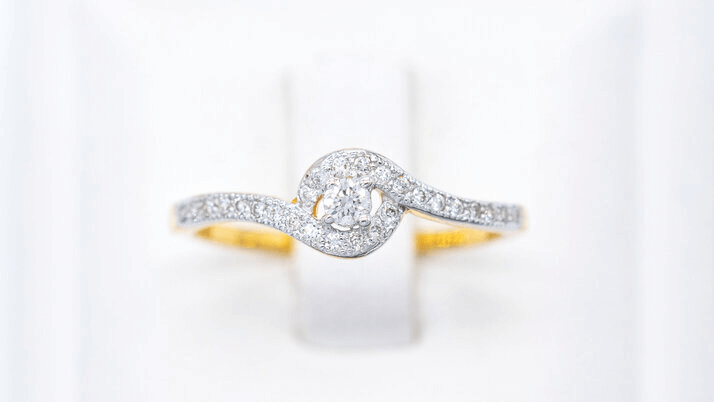Cluster Diamond Rings: Pros & Cons Revealed!

By Gary A.

Edited by Olivia H.
Published Aug 17, 2021
Edited on Dec 18, 2024
A cluster diamond ring brings together a stunning arrangement of smaller diamonds, creating an eye-catching sparkle that rivals even the most classic solitaire styles.

Navigate This Guide:
- 7 Quick Tips for Buying a Diamond Cluster Engagement Ring
- Introduction to Diamond Cluster Rings
- The Allure of Diamond Cluster Settings
- Diamond Selection for Cluster Rings Settings
- Pricing the Dream: Understanding the Cost of Diamond Cluster Engagement Rings
- The Practicalities: Cleaning and Maintenance for Cluster Rings
- Trends in Diamond Cluster Rings
- Our Expert Take
- 7 FAQs
Before we dive deeper into the specifics, here are some practical tips to help guide your decision-making process:
7 Quick Tips for Buying a Diamond Cluster Engagement Ring
When purchasing a diamond cluster engagement ring, it’s essential to consider several key factors to ensure you make a well-informed decision. These tips will guide you through the process, specifically focusing on the unique aspects of cluster diamond rings.
- Tip 1: Understanding the Cluster Setting Examine the Setting Closely: In a cluster setting, multiple small diamonds are set closely to create a dazzling effect. Check that the diamonds are evenly spaced and securely set to avoid future issues with loose stones.
- Tip 2: Assessing Diamond Quality in Clusters Quality Over Quantity: While the allure of multiple diamonds in a cluster setting is strong, prioritize the quality of the diamonds. Look for good cut, clarity, and color, as these factors contribute significantly to the ring’s overall sparkle and appearance.
- Tip 3: Sizing and Comfort Considerations Comfort is Key: Due to the intricate nature of cluster settings, ensure the ring feels comfortable on the finger. Some cluster designs can be more raised or have edges that might catch on clothing, so it’s important to choose a design that balances beauty with practicality.
- Tip 4: Long-term Maintenance Plan for Maintenance: Cluster rings can require more maintenance than solitaire rings due to their complexity. Make sure you understand how to clean and care for the ring, as dirt and debris can easily accumulate between the stones, affecting its brilliance.
- Tip 5: Style and Design Harmony Complementary Design Choices: Consider how the cluster engagement ring will pair with wedding bands. Some cluster designs might limit your options for a matching band. Look for a design that complements or allows for easy pairing with different styles of wedding bands.
- Tip 6: Budgeting for Your Cluster Ring Balancing Budget and Brilliance: Cluster rings can offer a larger appearance for a lower cost compared to a single large diamond. However, ensure the overall craftsmanship and diamond quality align with your budget without compromising on the ring’s beauty and durability.
- Tip 7: Evaluating the Overall Appearance Visual Appeal and Symmetry: Pay attention to the symmetry and overall aesthetic of the cluster. The arrangement of the diamonds should create a harmonious and balanced look, enhancing the ring’s beauty and ensuring it stands out for the right reasons.
Now that you’ve got these practical tips, use Jeweler AI below to find the perfect engagement ring that suits your style and budget:
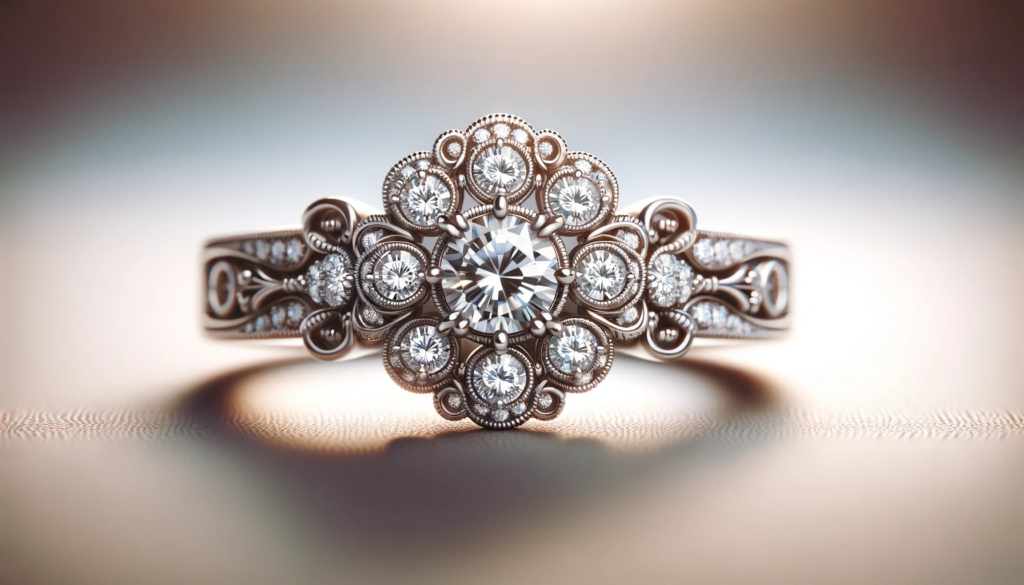
Introduction to Diamond Cluster Rings
While the solitaire setting represents the most conventional way of presenting your bride-to-be with a diamond, the cluster setting proves that there’s more than one way to set her finger sparkling.
Whether you’re looking for a vintage, intricate vibe or looking to design an affordable engagement ring with no shortage of sparkle, this setting could be one to consider – although there are a few things you should know about it before you start collecting your diamonds.
Defining the Diamond Cluster Ring
Rather than one main diamond, a diamond cluster features a number of much smaller diamonds set in close proximity.
These diamonds may form a circle or a particular shape. The flower setting is one example of the more intricate ways diamond clusters can be used to create an entirely new shape from stones that would be considered far too small to be featured prominently on their own.
In some rings, these diamonds are clustered around a slightly larger center stone – in others, they are all selected for their uniform size and shape.
When a larger stone is used in the center, a tight cluster of smaller diamonds surrounding it can give the illusion that the center diamond is bigger than it really is. Still, there is one factor which prevents a cluster setting from imitating a large solitaire diamond…
The Allure of Diamond Cluster Settings
The ornate and highly intricate design offers a vintage look that holds its own appeal. Their sparkle can resemble a firework scattered brightly across the night sky, which really appeals to some people.
But, while beautiful in their own right, cluster diamonds are not generally recommended over and above styles featuring a larger center diamond – particularly for engagement rings – because of the limited brilliance and fire given by these smaller stones…
Light Performance in Diamond Cluster Rings: A Key Consideration
Cluster rings sparkle, but not like a solitaire ring. Since you’re looking at many small diamonds interacting with the light, instead of one large one, the sparkle will be very different.
If you can, try to imagine the difference between a ring that sparkles and a ring that twinkles.
Since the diamonds used in a cluster setting have a much smaller surface area than the diamonds we typically see in engagement rings, there are certain limitations on the ways they interact with light. The brilliance and fire (white and colored flashes) that dance across every angle of a diamond are a result of the many twists and turns light takes as it travels through the gemstone.
Cluster diamonds are not only much smaller, but a lot of their surface area is set within the ring, and hidden from light sources.
The result? That same characteristic light performance, on a much, much smaller scale, happening many times over as the light travels over the cluster.
So, yes, cluster diamonds do sparkle and react to the light, but they don’t behave in the way most of us expect when we think of a diamond’s light performance.
Diamond Selection for Cluster Rings Settings
Choosing diamonds for a cluster is very different to picking a single diamond for the ring’s center setting. Since the diamonds that will work in a cluster a much, much smaller – closer to melee diamonds than solitaire stones – they needn’t be a particularly high clarity grade.
What you do need to focus on is color. Any discrepancy between the diamonds’ color grades may well be made a lot more obvious when they’re all set in that ring together.
Cut is also key, as maximizing the ring’s sparkle is necessary to compensate for the reduced light performance of smaller stones packed tightly together.
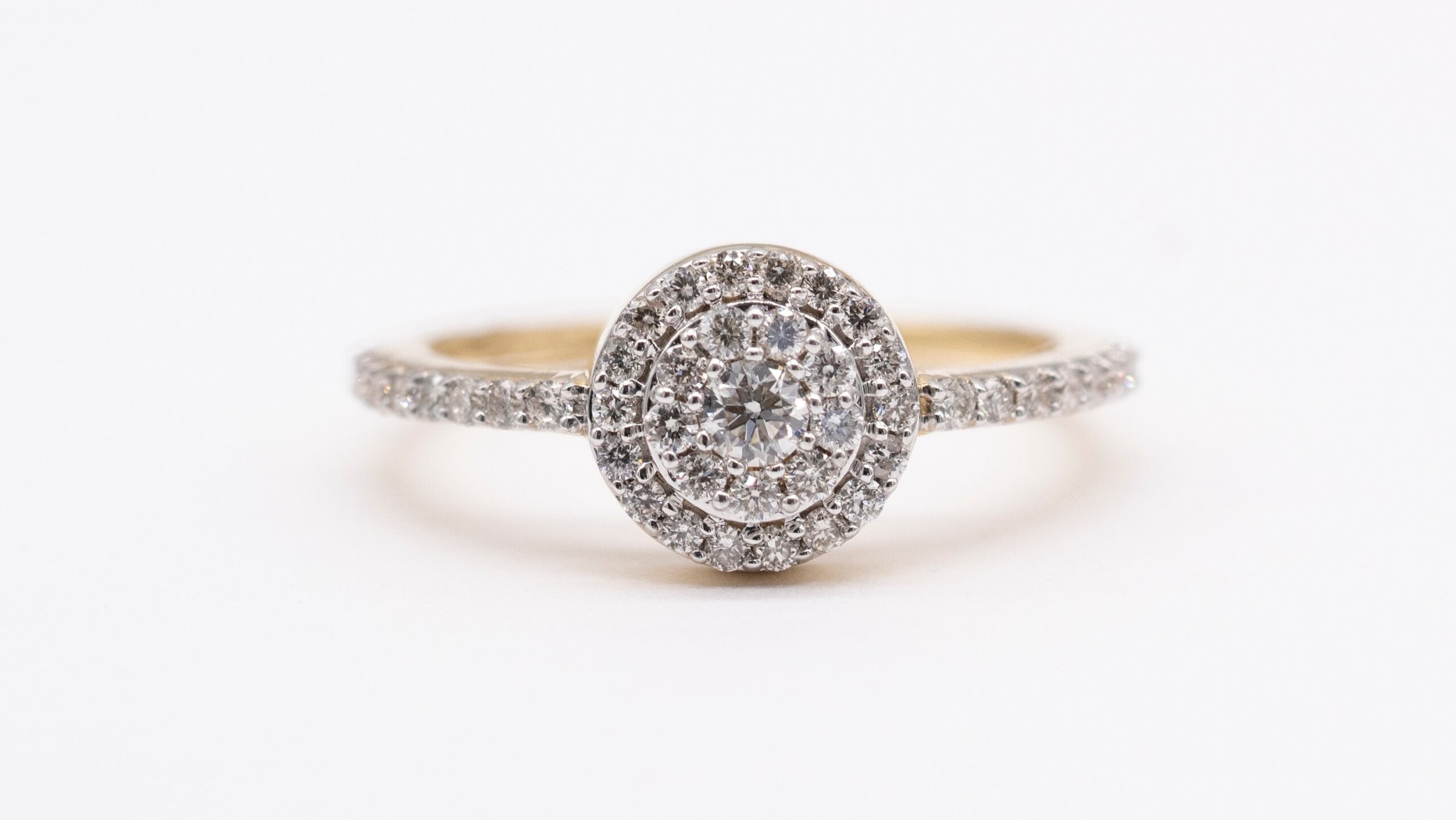
Pricing the Dream: Understanding the Cost of Diamond Cluster Engagement Rings
Cluster diamonds utilize stones that would be considered too small to feature in the center setting of a ring on their own, meaning that, while the ring uses many more diamonds, it is considerably less expensive.
These diamonds are known as ‘smalls’, and tend to be created as byproducts of the diamond cutting process. For this reason, they are easy to come by, and don’t hold a huge amount of value for jewelers as they will probably only be used for creating settings and accents on much more expensive diamond rings.
Diamond Cluster Prices
For a ring with a total carat weight (TCW) of one, the price will likely fall anywhere from $1,000+.
A one carat diamond can cost between $1800 and $10,000 – or more if it’s of an exceptionally high quality in terms of cut, clarity, and color. The diameter of a one carat round cut diamond is around 6.5mm, however, the tiny diamonds used in clusters are generally much, much smaller.
What’s more, their combined value will still be lower than a single diamond of good quality and carat weight. So, a ring with a total carat weight of one carat will be unlikely to cost the same amount as a ring featuring a one carat diamond at its center.
The Practicalities: Cleaning and Maintenance for Cluster Rings
A weekly soak in warm water and a mild detergent, and a gentle clean with a soft-bristled toothbrush should be sufficient.
The guidelines for taking care of a cluster ring aren’t any different to our standard recommendations for caring for a diamond ring, but these settings can be a little more difficult to keep clean. The intricacy of the setting means that dirt and oils can easily get ‘stick’ between the tiny diamonds, which may dull their sparkle without a very strict cleaning routine.
Trends in Diamond Cluster Rings
The cluster setting offers a distinctly vintage look – a fact which allows it to represent a pretty timeless option for any bride-to-be who likes this style. Still, it is not among the most popular settings today.
This is primarily down to the fact that the solitaire diamond is still the first thing that pops into most of our heads when we hear the phrase ‘engagement ring’. Other setting styles, such as the highly popular pavé setting, build upon that original solitaire diamond design.
The cluster setting reinvents it altogether, and, while it gives the wearer more in terms of intricacy and minute detail, it does require some sacrifices, too.
For anyone who likes the cluster setting, but would rather not push the boat so far out, the halo setting may represent the ideal compromise.
Our Expert Take
In our opinion, the downsides to this design tend to outweigh the benefits, but that needn’t deter you if you have your heart set on a cluster diamond ring.
Whatever your choice, the diamond cluster is a beautiful and eye-capturing design – and a little more unusual than some of the more popular styles. Our best advice is to check out these styles during your consultation with your jeweler, and make up your own mind about their unique sparkle and appearance.
7 FAQs
- Q: What Is a Diamond Cluster Ring?
- A: A diamond cluster ring features a group of smaller diamonds set closely together to mimic the appearance of a larger diamond. These clusters can form various shapes and are often used in engagement rings for a unique, sparkling look.
- Q: How Do Cluster Diamond Rings Compare to Solitaire Rings?
- A: Cluster rings offer a more intricate and decorative appearance, using multiple small diamonds to create a dazzling effect, while solitaire rings feature a single, larger diamond. Cluster rings often provide a more affordable alternative to solitaires.
- Q: How Much Is a 1 Carat Diamond Cluster Ring Worth?
- A: The value of a 1-carat diamond cluster ring varies widely based on diamond quality, ring design, and metal type. They can generally be more affordable than a single 1-carat diamond due to the use of smaller stones. Q: Are Cluster Rings Durable?
- A: Yes, cluster rings can be durable if well-made. However, they may require more careful handling and regular maintenance due to the multiple small diamonds set closely together.
- Q: How Do You Clean a Cluster Diamond Ring?
- A: Clean a cluster diamond ring using a mild soap and warm water solution. Gently brush the diamonds with a soft-bristle brush, rinse thoroughly, and dry with a lint-free cloth. Regular cleaning is essential to maintain its sparkle.
- Q: Can Cluster Rings Be Resized?
- A: Resizing cluster rings can be more challenging than resizing solitaire rings, especially if the setting is intricate. It’s important to consult with a skilled jeweler to determine the feasibility and cost of resizing.
- Q: What Should I Look for When Choosing a Cluster Engagement Ring?
- A: Focus on the quality and setting of the diamonds, the ring’s comfort and fit, the overall design and its compatibility with potential wedding bands, and ensure it suits your budget and style preferences.
- Q: Do Cluster Rings Go Out of Style?
- A: Cluster rings are considered timeless due to their vintage appeal. While trends may change, a well-chosen cluster ring remains a classic and elegant choice for an engagement ring.
Explore the wonder of diamond clusters with Jeweler AI and find an engagement ring that echoes your heart’s desire.
FOLLOW-UP GUIDE SERIES





